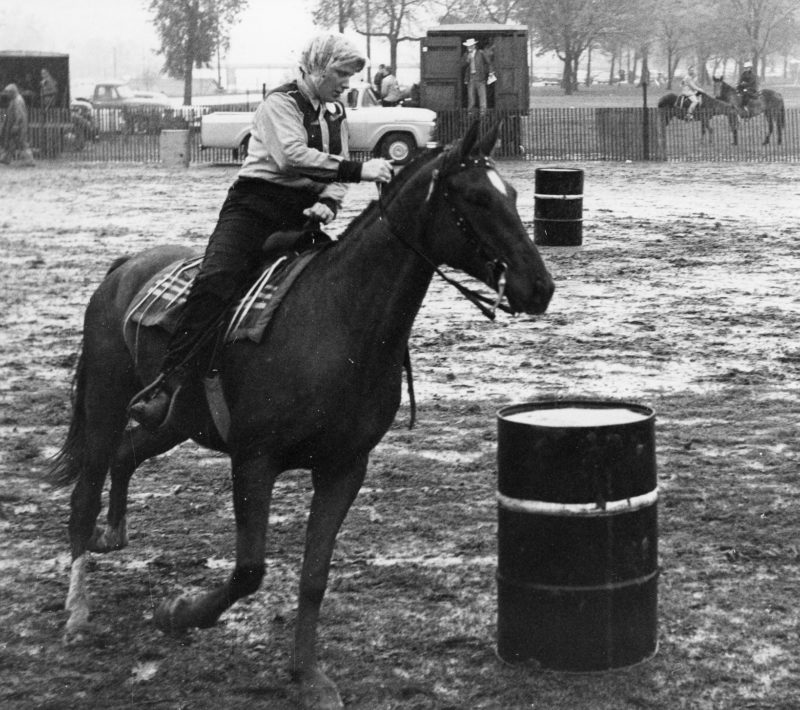Traditional Oktoberfest Fashions Of The Woman’s Dirndl
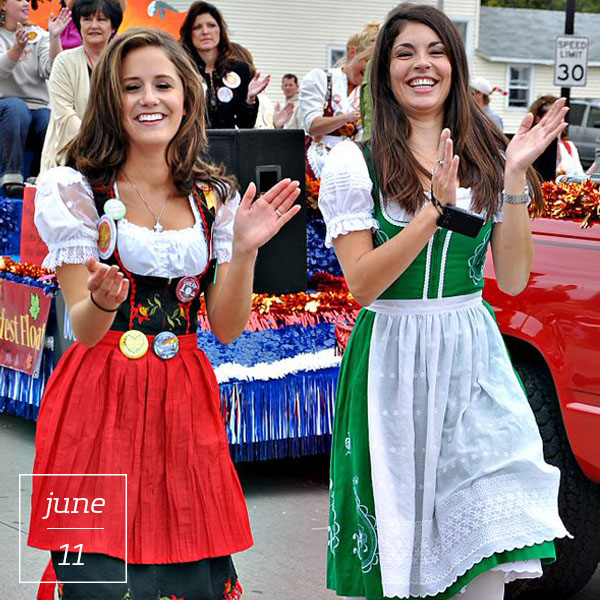
You may have seen or heard of a dirndl, but what is it exactly and how did it come to be the traditional Oktoberfest fashion worn by women? A dirndl is the name of a woman’s dress traditionally worn in southern Germany, Austria, Liechtenstein, Switzerland, and Alpine regions of Italy. The dirndl is a folk costume (in German – Tracht), and today is generally regarded as a traditional dress for women and girls in the Alps. It developed during the 19th century, originally worn by Alpine peasants as work clothes while they cleaned, worked on farms and in fields.
Today the term “dirndl” refers to a dress with a tight bodice, featuring an often deep rectangular or round neckline, a wide high-waisted skirt (whose length changes with prevailing fashions), and an apron. Styles and designs vary, from simple to high-end.
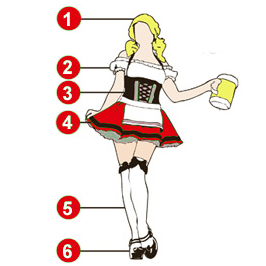
- Crown braids are the traditional hairstyle worn.
- The blouse accentuates the style of the dirndl; different styles include delicately hand-embroidered pieces, blouses with extravagant ruffles and lace, or simple ones with straight sleeves. It is short in length, reaching to just below the bust. Most blouses are white; typical materials are cambric, linen, or lace. Short puff sleeves are most popular, although narrow sleeves (short or long) are also common. The neckline may be high, V-shaped, balconette, or heart-shaped.
- The bodice (in German – Mieder or Leiberl) is sewn onto the skirt, although before the 1930s the two were separate. Both are made from colored or printed material, usually cotton, linen, velvet, or silk. The bodice is typically made in a single piece, with the join in the front center, secured by lacing, buttons, or a hook-and-eye closure or a zip.
- The dirndl skirt is wide and folds in to accentuate at the waist, making any woman look beautiful in a dirndl. It was originally ankle-length but in more modern designs, is mid-length accented with an apron.
- Stockings are worn and typically white in color and knee-length.
- Traditional German-style shoes and comfortable ones, we might suggest to wear during Fest if you plan to be on your feet all day!
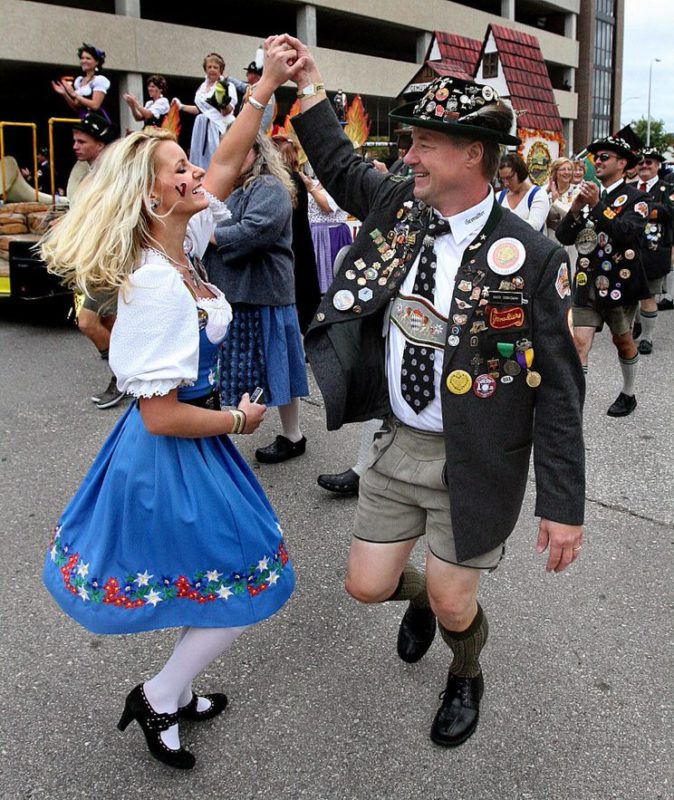
In the late 1800s, around 1870, the dirndl became widely popular among the upper echelons of society. Suddenly, the simple dresses made of practical fabrics were transformed into very stylish, colorful dresses often made of silk, satin, and other expensive fabrics.
Germans, Austrian, Swiss, and Scandinavian people migrated to North America in the 19th century. Across the US then and today, people celebrate their folklore heritage at community events and festivals wearing the dirndl as we do at Oktoberfest in La Crosse. See more traditional Oktoberfest fashions here.
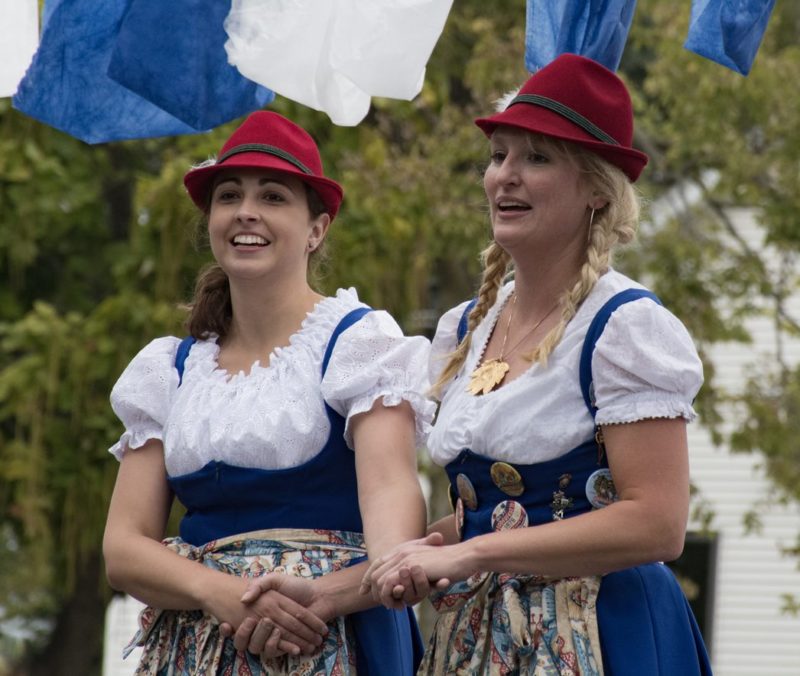
The History Of Oktoberfest In La Crosse
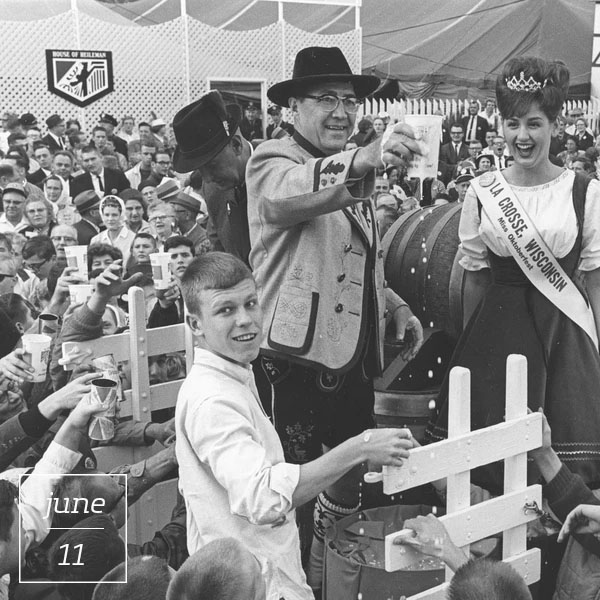
The first Oktoberfest, USA, was held on October 13, 14, and 15, 1961…but the planning began many months before. In early 1960, civic leaders had agreed that La Crosse needed a community-wide activity of some sort. The city had been without such an event since 1921. Because that earlier celebration had been a winter carnival, many of the leaders were in favor of renewing this idea as a La Crosse tradition.
However, there were problems involved with holding a winter event on the same dates each year. First, as we all know, it is virtually impossible to predict the winter weather in Wisconsin from day to day, much less a year in advance. Second, assuming the worst, the costs of providing artificial ice and snow were prohibitive. Finally, there were several winter carnivals in the area, including the internationally known St. Paul Carnival. The proximity of Minneapolis and its highly successful summer festival, Aquatennial, tended to rule out a similar event. Although neither festival was completely dismissed, it was agreed upon that a fall celebration was the best answer.
During the fall of 1960, several officials of the La Crosse based G. Heileman Brewing Company, Roy Kumm, Don Rice, John Coleman, and Ray Ping were also discussing an annual promotion. News of these discussions spread through the firm, eventually reaching the malt house, where two of the employees suggested having an Oktoberfest. One was John Dickow, who while in the army was stationed in Germany and attended Munich’s fall festival. The idea was quickly accepted, for two primary reasons:
- October is the time of color, as the leaves change from summer green to the brilliant fall colors.
- Early October usually marks the end of the harvest and the preparation for winter. It was believed that a festival at this time would provide an ideal “relief valve” and a way to give thanks for a bountiful harvest.
As the idea for an Oktoberfest grew, it quickly became apparent that there would be much more to do than could be handled by a single firm. It was agreed that the Oktoberfest should be a completely civic enterprise. Early in 1961, brewery officials contacted the La Crosse Chamber of Commerce and proposed the idea to chamber members. Oktoberfest in La Crosse was accepted, and both agreed that the chamber would act as the sponsoring organization.
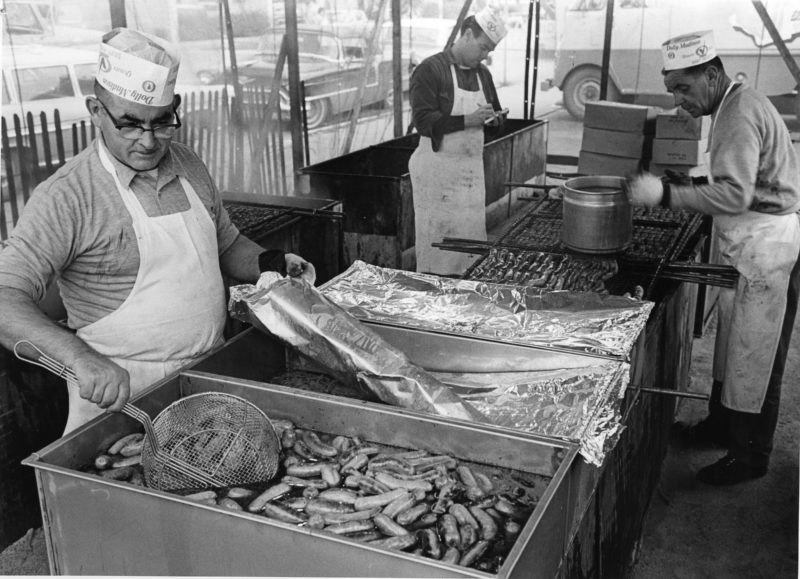
An Oktoberfest Committee was established to oversee the proposed annual celebration. This committee set forth five primary objectives for the fall festival:
- to promote local pride in La Crosse
- to obtain national publicity for La Crosse
- to promote “tourism” to La Crosse and the Coulee Region
- to involve a large number of people
- to break even financially, while remaining a non-profit organization
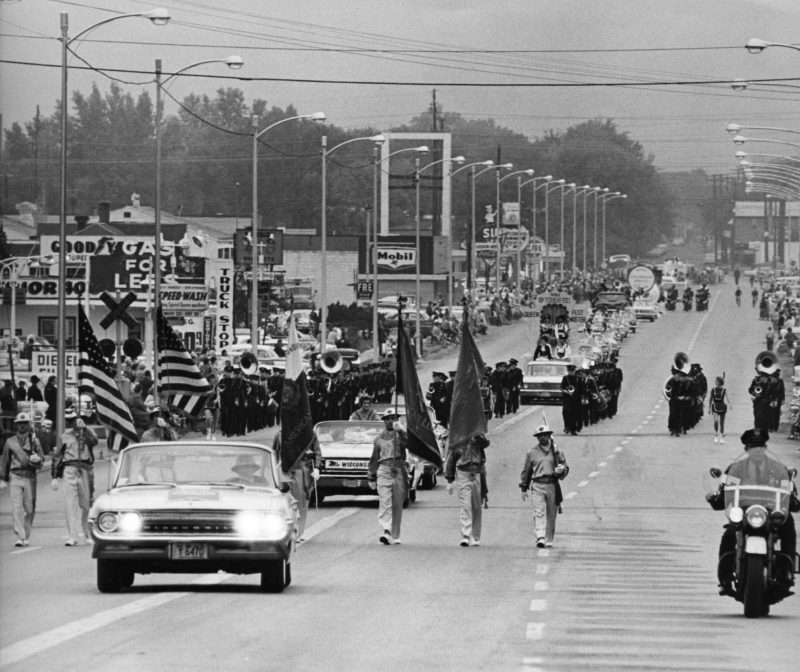
The almost unbelievable growth of Oktoberfest, USA, since that first year has made reality of all the objectives. It was conceived as a holiday for the community and accepted by the community on those terms. In 1962, the name “Oktoberfest” was registered with the State of Wisconsin. In 1963, “Oktoberfest, USA” was registered and listed as a trademark with the federal government. In 1965, the newly-formed La Crosse Festivals, Inc., purchased the assets of Oktoberfest from the Chamber of Commerce and became the sponsoring organization.
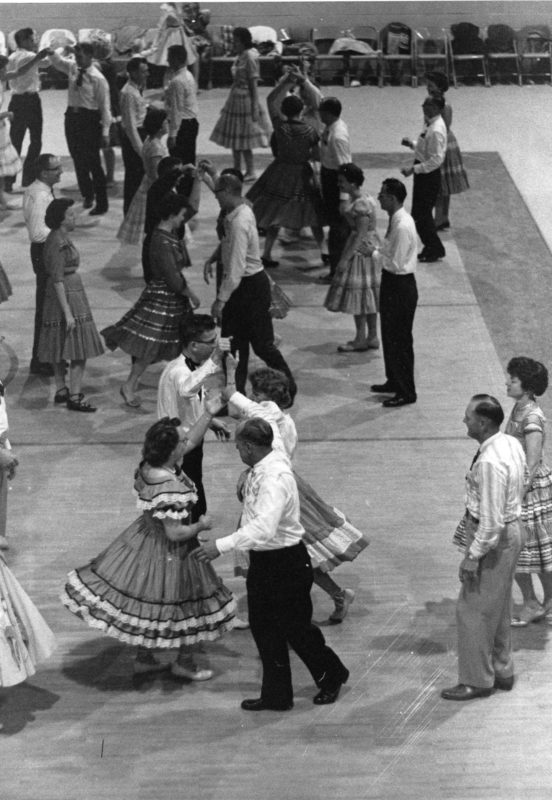
Fun Facts: The first Oktoberfest in La Crosse was called a “farm show” by many people. A cow chip throwing contest and catching a greased pig were attractions. Old-fashioned steam engines also participated in a demo of early log cutting during the lumber era of La Crosse. Art exhibits, train rides, and a rodeo were also favorite early events in 1962 that took place.
